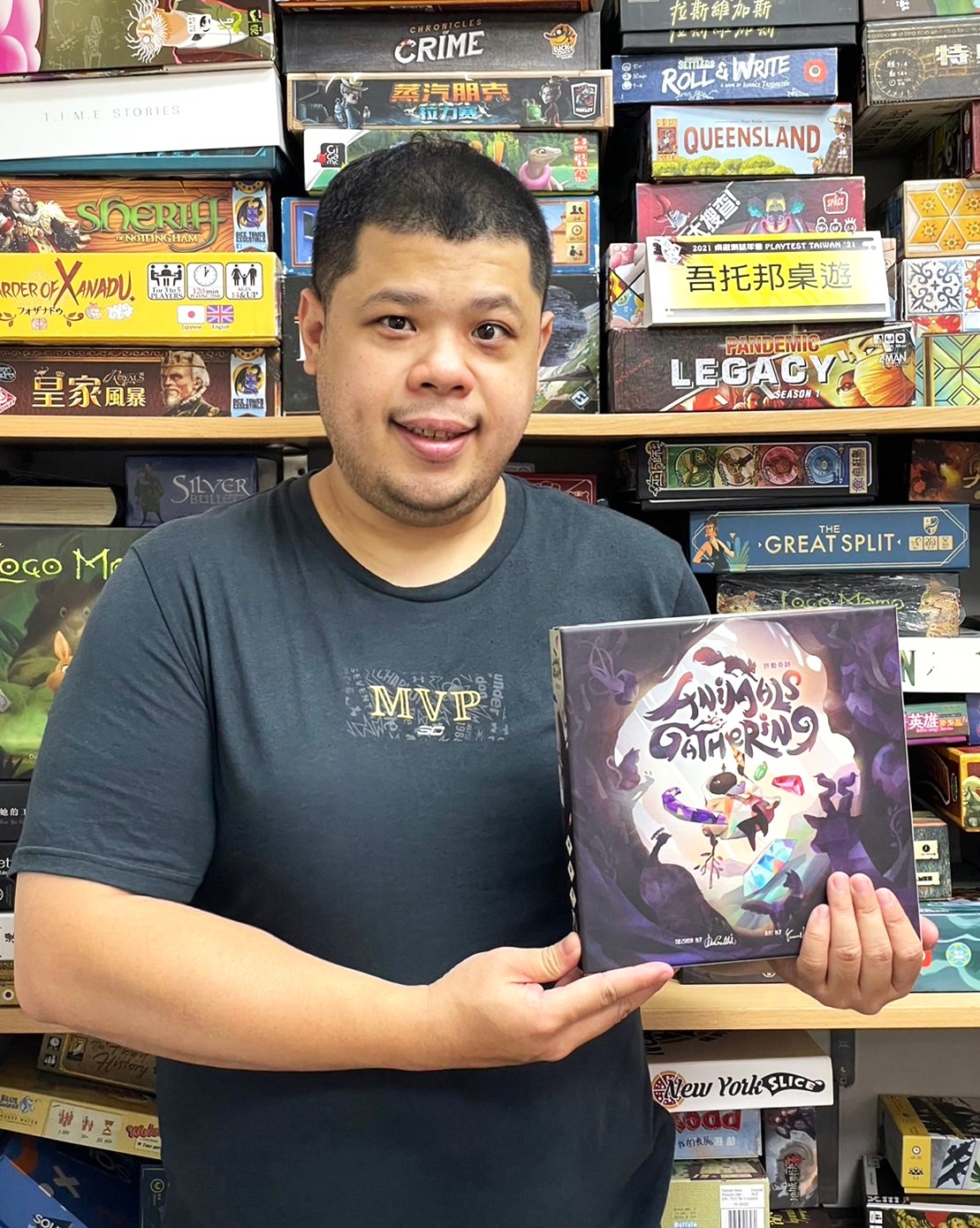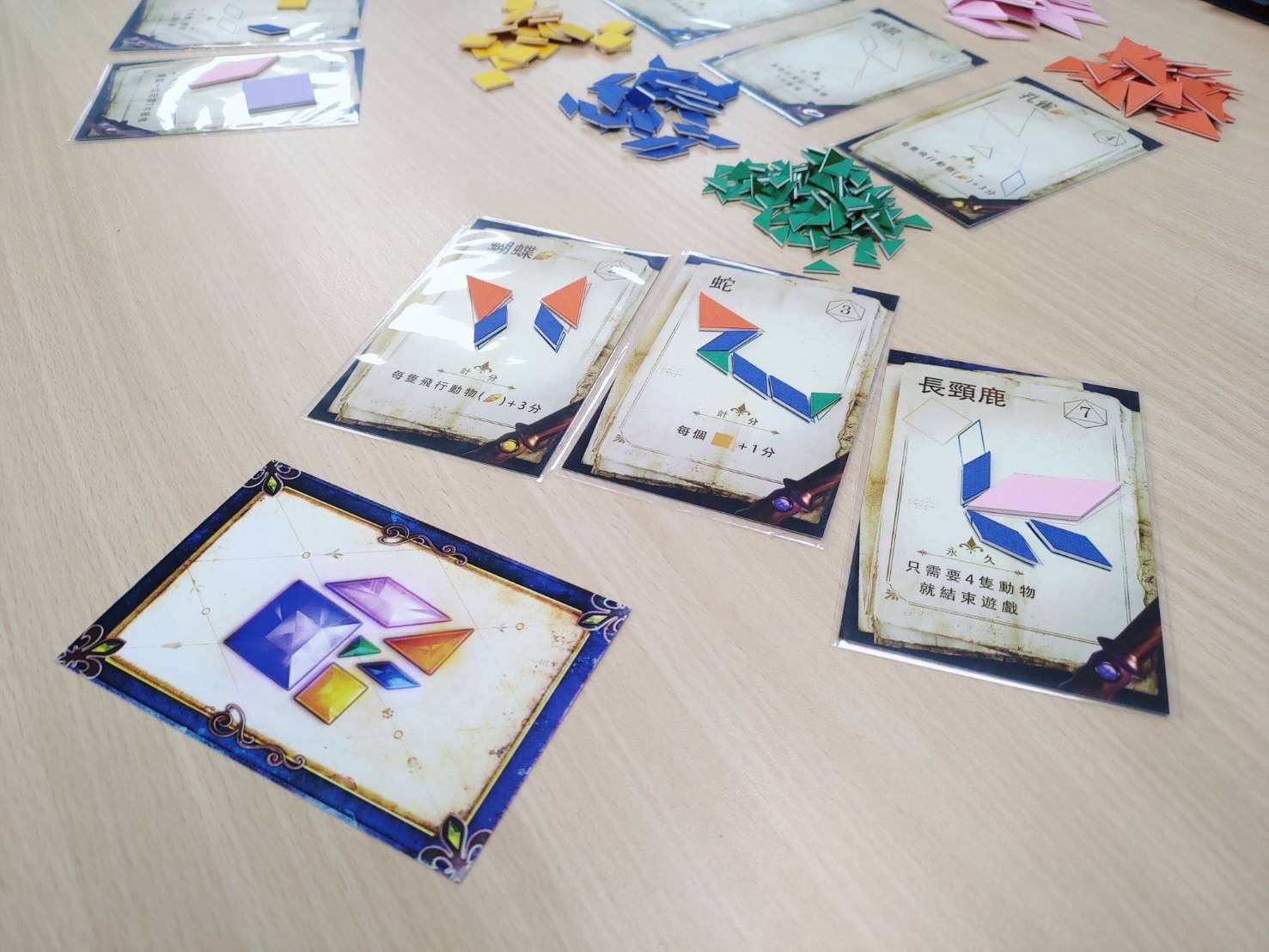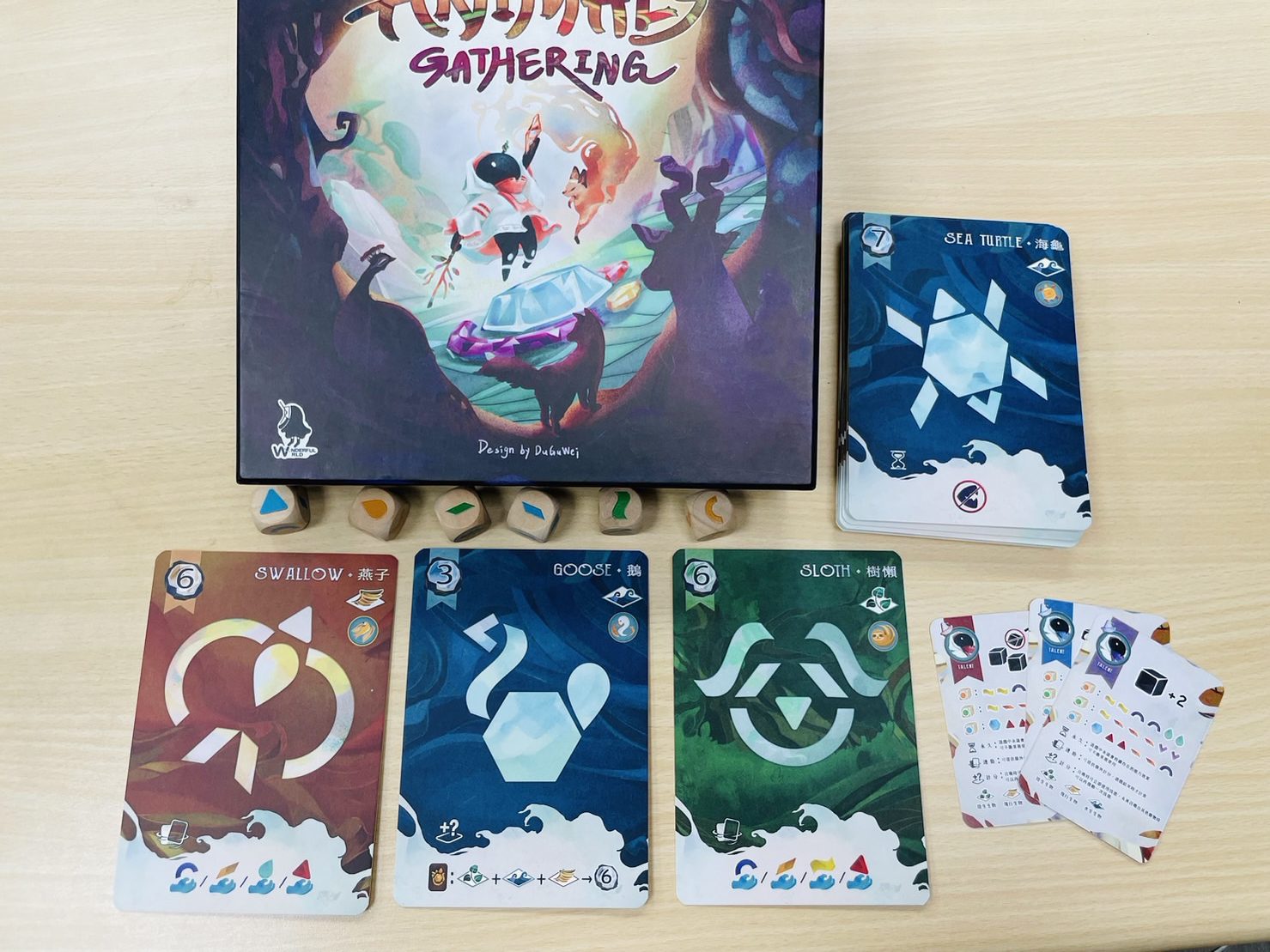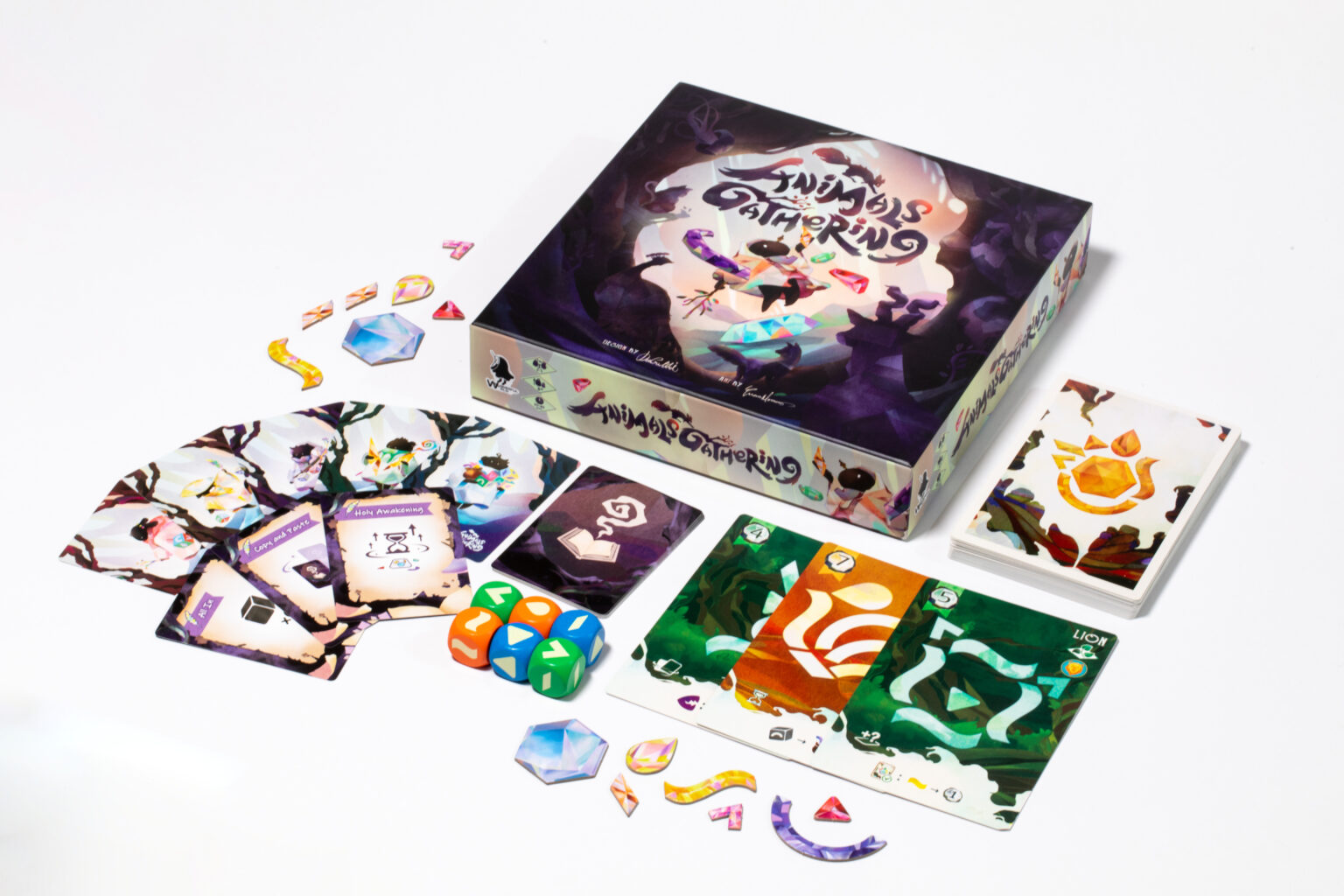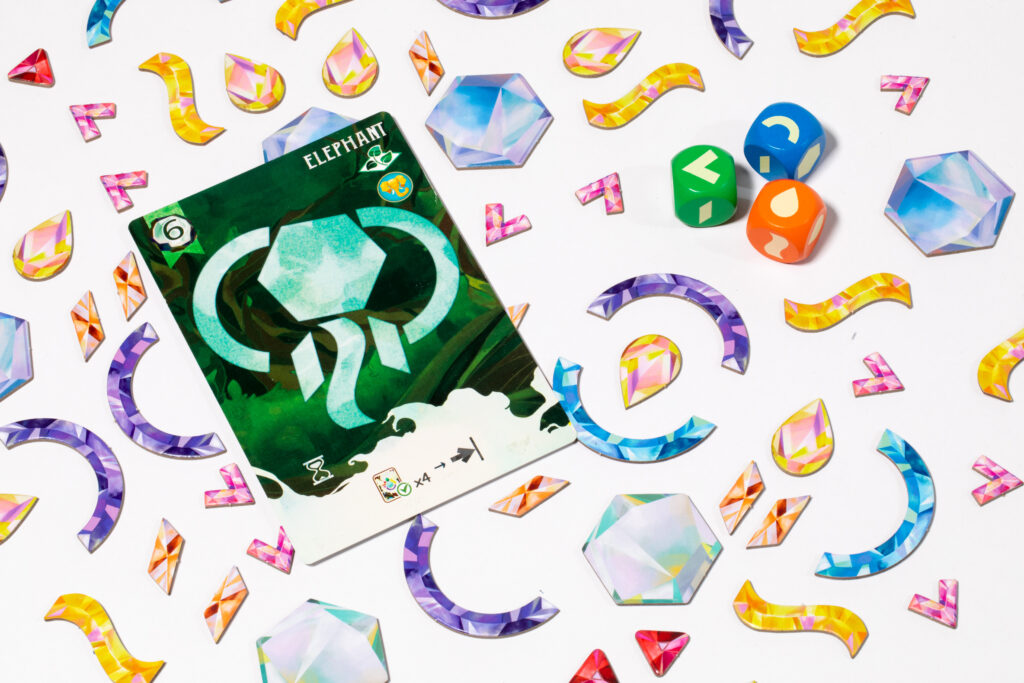HOW ANIMALS GATHERING BECAME THE GAME WE KNOW TODAY:
A DESIGNER’S JOURNEY
CONTENTS
How many revisions and evaluations does it take for a designer to reach at least 80% completion for a game? Check out our article (click here!) on the art design evolution of Animals Gathering, a collaboration between Wonderful World Board Games and Taiwan’s veteran designer, DuGuWei.
Publishing a game requires at least 100 playtests and refinement based on feedbacks, leading to a core gameplay and mechanics satisfaction of 65% or more.
✨Have you ever wondered which comes first, the theme or the game mechanics?
Well, if you’ve seen the original version of “Animals Gathering”, or if you were one of the players in the early testing phases, you’ve probably seen the game’s initial design.
It used common geometric shapes like squares, triangles, and parallelograms to piece together animal tiles. Most people would think of tangram puzzles at first glance, and you know what? Bingo, the inspiration is exactly coming from tangram when I shop at the toy stores. (one of the best place has tons of ideas)
I wanted to transform the versatile tangram pieces into various “animal” themes with a “complete collection” game mechanism. So, the theme and game mechanics were decided simultaneously, and that’s how the concept evolved.
👇Here is the old design of Animals Gathering👇
✨A Challenge to Non-Geometric Jigsaw Puzzle Game
In the process of triggering the idea of a tabletop game, the goal was not to test players on how to fit puzzle pieces together, but to use these pieces to create various animals that enrich the game’s content and story.
From start to finish, I never set out to create “Animals Gathering” as a geometric puzzle game, but instead wanted to use it to challenge myself to design a “worker placement” mechanism that I am not very good at! What? This game was originally meant to be a worker placement game? Then how did it end up becoming what it is now….
✨Failed Game Mechanic Design
When the theme was decided to be about collecting fragments to summon animals based on a field guide, I decided to challenge myself by designing a worker placement mechanic – something I’m not good at. In the first prototype, the worker’s role was simply to collect tiles.
Different areas had different restrictions, and players couldn’t collect tiles from the same area twice. Animal skills not only rewarded players with extra actions but also interacted with the worker placement areas, generating resources or blocking opponents.
This version was tested at the Swan Panasia Tabletop Gaming Meetup in Taichung and Taipei, as well as in private playtesting sessions. The game was mediocre, with a bit of Task solving feeling. The lack of memorable moments was a major flaw, and the game was too easily predictable for intermediate and advanced players.
✨The Birth of Dice-Driven Game Mechanic
Since the game failed due to being too predictable, why not challenge the opposite? That’s when I decided to incorporate dice, which can easily create game-breaking moments, into my design. But the challenge now was to create a dice game that was still relatively controllable for players.
In “Animals Gathering,” I found my answer: first, I divided the dice into different types so players could choose the most favorable dice face to roll. Second, the resource output of rolling doubles or triples was shared among all players, ensuring that even if the main player couldn’t collect them, others could. These designs gave players a sense of control and added another layer of depth to the game.
With strong and clear risk management, players had to consider the combinations of tiles they needed to complete their personal field guides, as well as the overall supply and demand of the market. Finally, by linking the number of dice rolls to the number of animals waiting to be summoned, players had even more decisions to make.
However, even if the entire driving mechanism is replaced, the core concept of the game has always been “synchronously controlling risk while selecting the most efficient actions, avoiding ineffective actions in the early stages, and quickly entering the later stages to perform small combos.”
The unique driving mechanism of “rolling dice to generate resources and distributing them with a flip of the dice” is the essence of “Animals Gathering”!
✨ Inspiration for the engine mechanism
In the story setting, the summoned animals are considered as the player’s companions. You may find it familiar, like some cartoon. Yes! I wanted to bring out the feeling of having companions like in “Pokemon.“ Since there will be companions gradually revived and joining in the game, why not design a skill concept like “bonding”?
So I designed the “link” skill – a one-time skill that can be activated when the animal companion is revived, but once any new companion appears, the skill will be activated again! This design not only enhances the sense of companionship and bonding but also maintains the simple and easy-to-understand tone. In fact, this skill engine existed in the first sample, and I loved it. It is a design that has remained unchanged from beginning to end.
✨ Concentration and expansion of skill design
The only engine in “Animals Gathering” comes from skills, but not every skill set design is perfect. In fact, at the beginning of the dice-driven design, 1/4 of the animal index card did not have any abilities, only higher scores.
The original design was directly aimed at the endgame score rush design, allowing players to abandon skills in the middle and late stages and go straight for points, even playing a simple and pure score flow from the beginning of the game! (During testing, I often explained that this companion is just a cute, skillless one but with a high score 😂) However, players usually give feedback with doubts, and later, I also felt the importance of consistency. I tried to see from players angle and figured out the mindset of “if there is a skill on the cards, of course we will use it.”
Therefore, in the later editing, I removed the “no skill design” and added all of them into the three major categories of “linking, permanent, and scoring” skills, and increased the weight of the scoring category, allowing the scoring skills to replace the score-boosting function of the no-skill design.
At the same time, I also deleted a scoring skill that was originally designed to use the results of the dice to jump scores. Since this kind of skill has a unique scoring timing and requires additional indicators to mark, players are easy to have doubts or forget about the skill. At the end, I decide to take away this mechanics in order to keep the game more unity.
The final product is shown below👇
This article is a translation and adaptation from the Facebook page of designer DuGuWei. Click here to visit his page.
👉 BGD.DuGuWei


 中文 (台灣)
中文 (台灣)